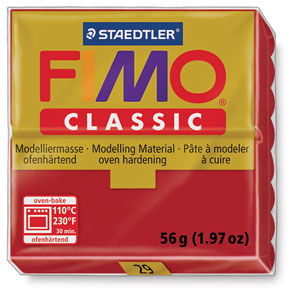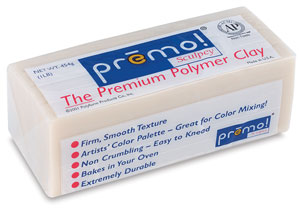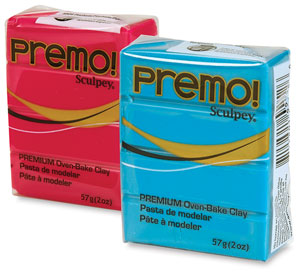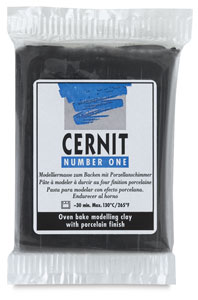|
Contact the seller in advance before paying for the order! Polymer Clay Brands, Firm And Liquid.There are several brands of polymer clay on the market. They are all made of gels, plasticizers, color agents, fillers and resin, but have slight differences when it comes to conditioning, baking, changing of colors when baked, and how easy they are to sand etc. Since each has different characteristics some polymer clay artists use only one brand, while others combine brands to get the right combination they need according to what they want to make.
If you do have the opportunity though, try the different brands, one at the time and mixed with each other, until you find what works for you. Take into consideration what climate you live in though. If you live a place where it is very warm, some brands may not be suitable, as they get very soft and sticky when warm. So what kind of clays do we have? Want to know? Keep on reading!
These beads are made of Fimo Soft Polymer clay. I have used translucent clay with silver leaf to add depth and a dichroic effect. They are glazed with liquid polymer clay. Fimo polymer clay comes in three types, Fimo Classic, Fimo Effect and Fimo Soft. Fimo Classic Fimo Soft Fimo Effect You can also get transparent white Fimo Soft. I use this a lot to create different effects as depth and glass like appearances in my jewelry. It is an amazing clay, but condition it well, since it is prone to air bubbles. Additional to this, you can also get one night glowing clay, 7 glitter colors, 6 translucent colors, 2 stone colors and 7 metallic colors. The metallic and pearl clays are not only beautiful, but you can create great almost 3 dimensional optical illusions with the Mica shift technique. You can see it in this tutorial:Radiant Mica Shift Necklace Fimo Effect clays are a bit harder to condition than Fimo Soft, but unless not heat damaged from wrong storing, it becomes malleable relatively easy, and the results are totally worth some extra conditioning. Both Fimo Classic and Fimo Soft, cures at 230'F / 110'C All three clays are without hazardous Phthalates , which means that they are non-toxic. KATO: Kato Polyclay is vacuum extruded, and has therefor the most bothersome air pockets removed even before you open the pack. It has a good color stability and strength when cured. You can get it in 21 colors including metallic, pearl and translucent colors. It also comes in 4 color sets and you can get concentrated colors designed for color mixing. Katos metallic clays are very dens with mica and are therefor superb for mica shift techniques if you want to try this out. It bakes at 300'F / 150'C, but can be cured at 275'F /135'C if mixed with other clays. Kato polyclay is non toxic. In these earrings you clearly see the effect of mica-laden clay. The pattern looks three dimentional, but is two-dimentional. 
SCULPEY: Sculpey III:
When you mix it with other colors it works a little like bleach, and brightens the colors and even make white whiter. Premo is a translucent clay and is known to be the clearest of all the translucent clays. It remains flexible after curing and therefore will not crack if you make large beads. Premo! Sculpey Sculpey Premo comes in 32 colors, which are different from the colors of other clays, because they are modeled after those of oil paints. It also have several special effect clays, like pearl, metallic, glow in the dark, fluorescent and translucent. Studio by Sculpey: The clay is extremely durable after curing. It does not break or crack if you bake large pieces, and cures to a suede like finish. You can choose from 34 beautiful colors, but to my knowledge only one special effect clay: antique gold. All the sculpey clays bake at 275'F /135'C Sculpey clays are non toxic. Well,that were the Sculpeys, lets move on to: Cernit : It has a beautiful translucent, porcelain-like finish, and is therefor highly treasured by doll makers. As said above it has a superb strength after baking, even when you make very thin pieces. If you use it for caning, it must be mixed with another clay in order not to get to sticky. I find that it works very well when I mix it with Fimo Soft. If it tends to be too soft, I put it in the fridge for half an hour, and it is then firm enough for caning. Another feature it possesses is that it remains workable, out of the pack, for up to a year.(Yes, you read that right..a whole year). Cernit comes in a range 24 colors, including translucent. It also have 18 pearlescent colors that are called the Glamor line and are absolutely gorgeous, 6 neon colors, 7 colors designed for doll making and 6 nature clays. It's almost like a candy store, really. Cernit is also Phthalate free. LIQUID POLYMER CLAY If your clay has become hard and crumbly, add some drops of liquid clay and it will work as a softener. It bonds raw and cured clay, but must be baked in order to do that, but since Polymer clay can be re-baked several times, that is no problem. You can use it as a glaze and to make fake enamels, like you can see in these tutorials: Faux Plique-a-jour Earrings There are two brands of liquid clay dominating the market today: Kato Polyclay Clear Medium Liquid: Kato liquid polymer clay is also less prone to air bubbles. I have experienced quite a few times that air bubbles ruin a bead as a bump or a white spot, so this is a strength. Lesson learned I now always check my pieces thoroughly before baking or heating them with a heat gun. The clay is fairly easy to sand, if needed. As the bead already is glossy when glazed with Kato polyclay, it may not be necessary to do, unless there is some unevenness you need to remove. Let the bead rest over night before you try to sand it, or it will be too rubbery. Translucent Liquid Sculpey I must admit that I have not tried this clay, as I am very satisfied with Kato. But if you have the opportunity, try them out for your needs. You may prefer one to the other, or use both for different projects. Non of the liquid clays contain potential hazardous phthalate plasticizers. So, now that you know what polymer clay brands there are to get, experiment until you find what suits you best and then make some gorgeous and awesome beads that are all you. Storing your clay right is important. You can read about it here. Leave a comment ,I would love to hear your opinion on this page. Good or bad, it will help me making this Site better. Comments from other visitorsClick below to see contributions from other visitors to this page... Good explanation Trouble conditioning Cernit |
Loans for US Residents:
Choose what you need:
Jewelry and polymer clay tutorial heaven

Promote Your Page Too
 Personally I use Fimo soft and Cernit, simply because they are what's easiest to get where I live, (in the beautiful country of Norway)and they work just fine for my needs. Thanks to internet,you can now get whatever you want through mail, but since polymer clay is heavy, the shipping costs may limit that option for you, as it does for me.
Personally I use Fimo soft and Cernit, simply because they are what's easiest to get where I live, (in the beautiful country of Norway)and they work just fine for my needs. Thanks to internet,you can now get whatever you want through mail, but since polymer clay is heavy, the shipping costs may limit that option for you, as it does for me.




 Translucent canes can be very decorative if they are rolled round a opaque colored
Translucent canes can be very decorative if they are rolled round a opaque colored 


